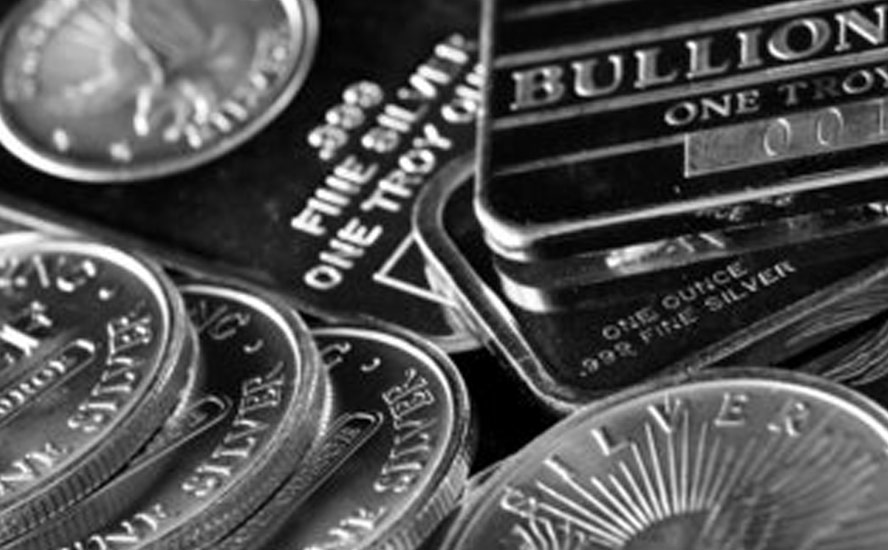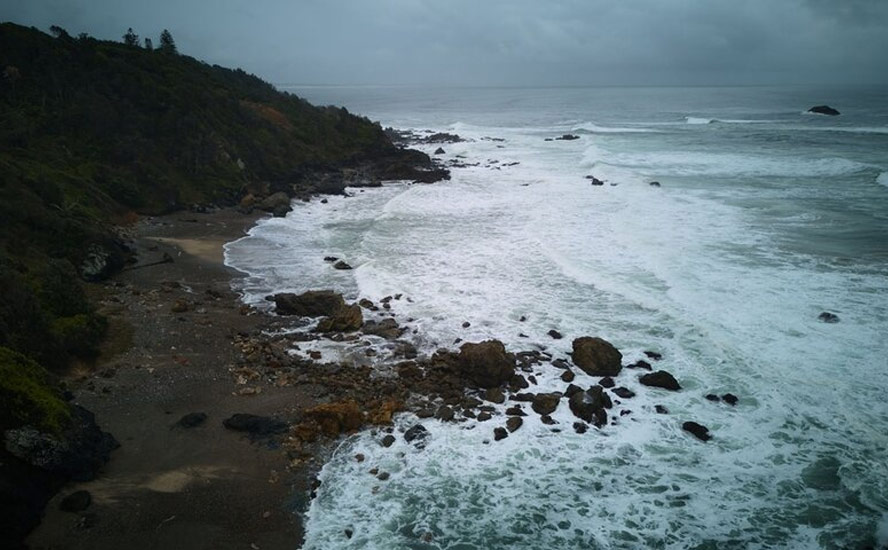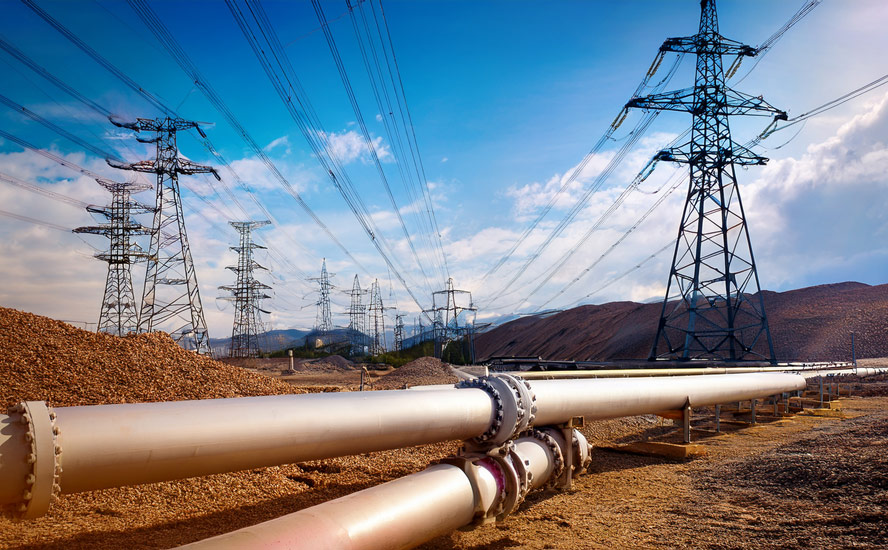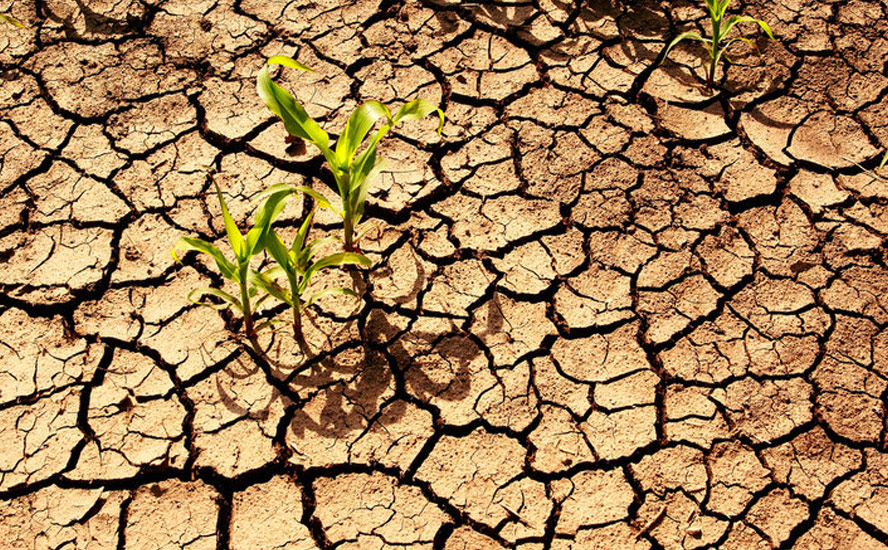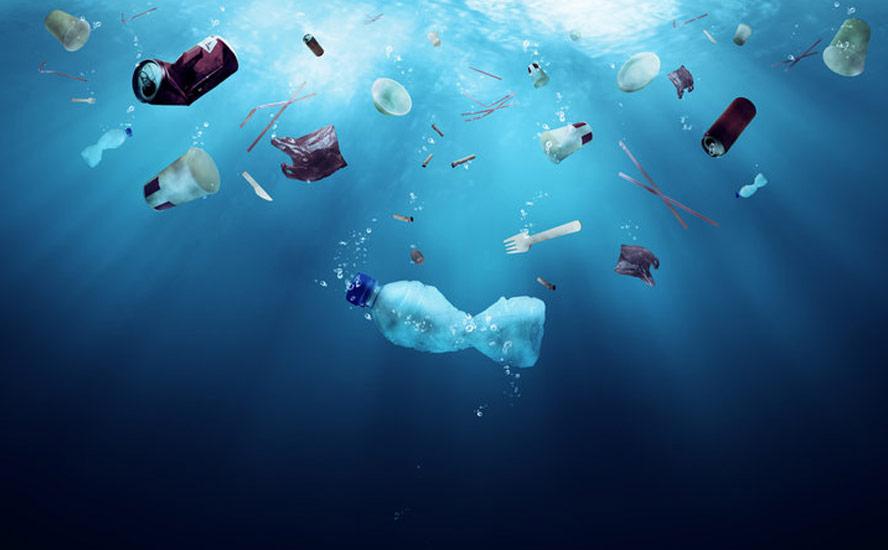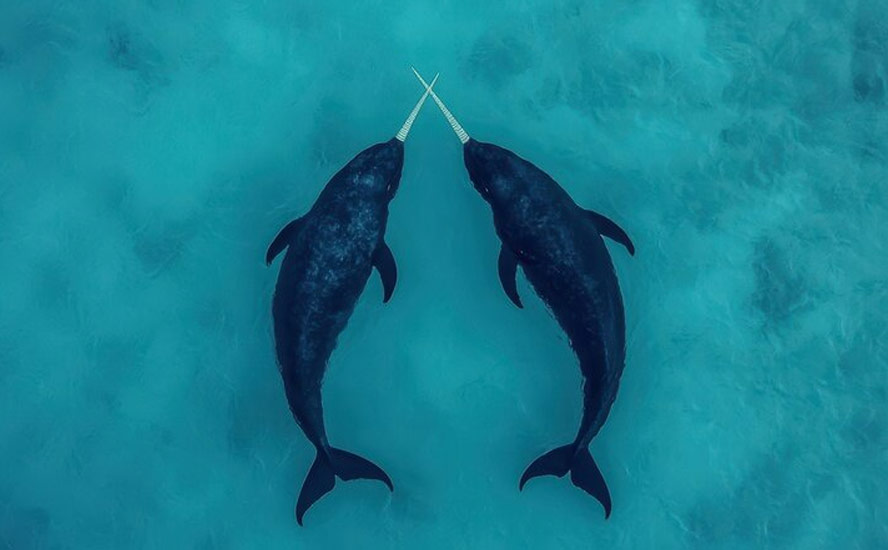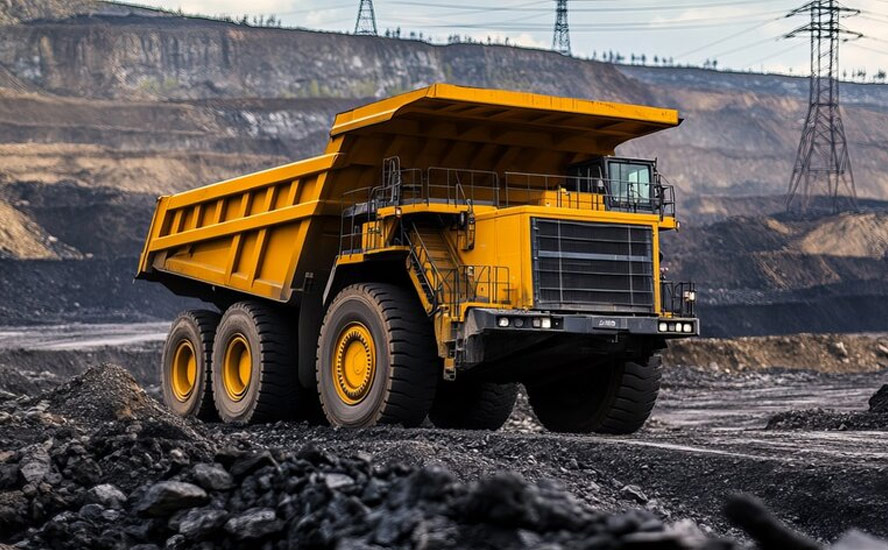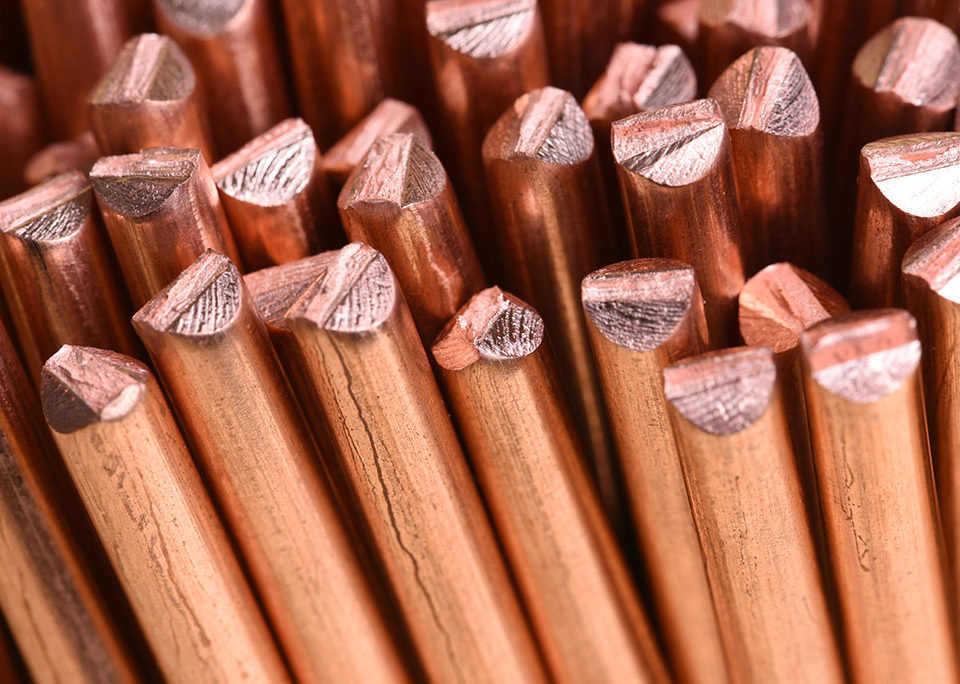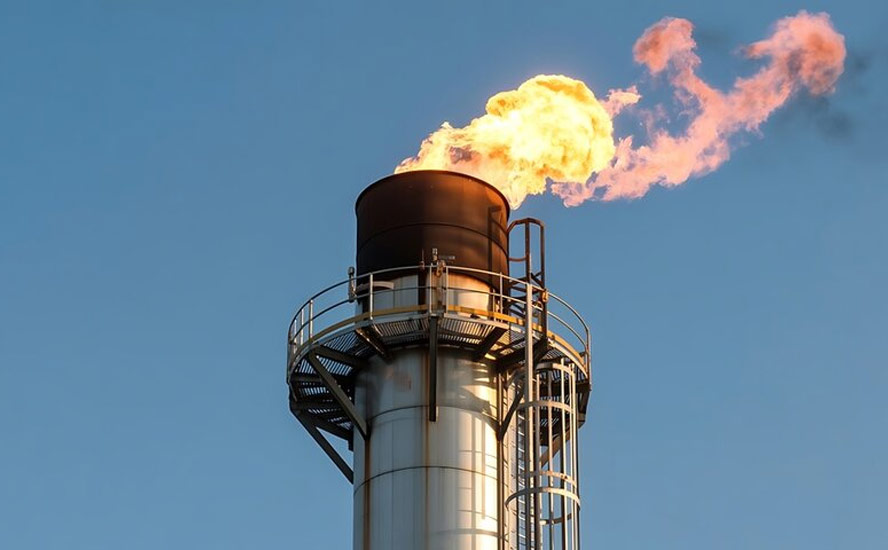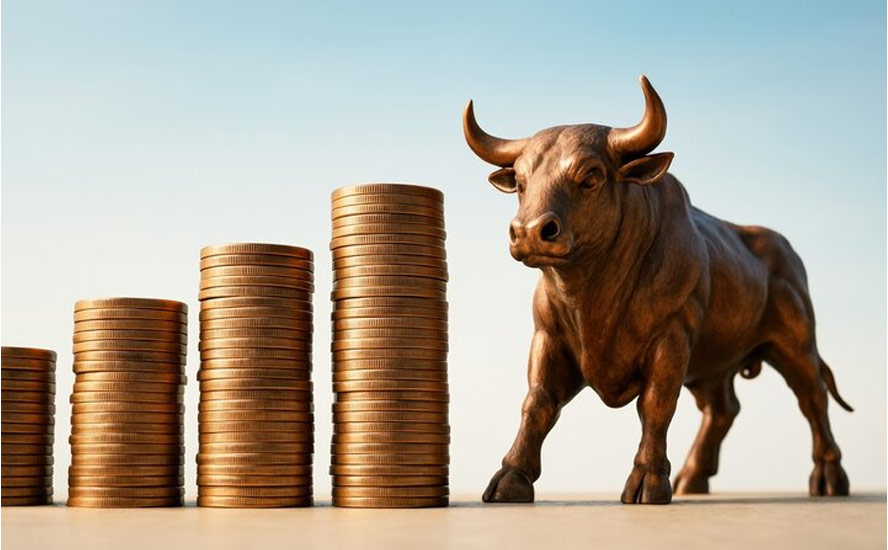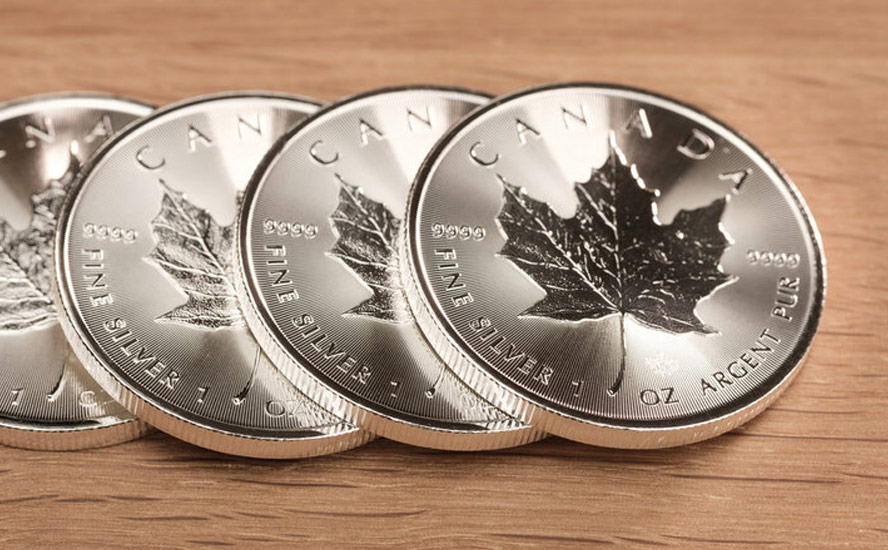The mounting obstacles to battery/ energy metals supply parity
2021.04.11
In late January mining analysts Mike Kozak and Matthew O’Keefe of Cantor Fitzgerald wrote in a research note:
“The adage of ‘if it can’t be grown it must be mined’ serves as a reminder that electric vehicles, transitional energy, and a green economy start with metals. The supply chain for batteries, wind turbines, solar panels, electric motors, transmission lines, 5G — everything that is needed for a Green Economy starts with metals and mining. Demand for these metals, principally lithium, nickel and cobalt on the battery side and copper, uranium and rare earth elements on the energy side is expected to rise rapidly.”
This is old news to us at AOTH. We’ve been banging the drums of electrification and decarbonization since Obama first began setting government funding aside for it in 2009.
What is new is how quickly demand for metals that will feed into these two global trends, is outstripping supply, creating a huge problem for the mining industry but also a once in a lifetime opportunity for savvy resource investors.
Metal’s demand
The fossil-fueled based transportation system needs to be electrified, and the switch must be made from oil, gas, and coal-powered power plants to those which run on solar, wind and thorium-produced nuclear energy. If we have any hope of cleaning up the planet, before the point of no return, a massive decarbonization needs to take place.
Commodities consultancy Wood Mackenzie said an investment of over $1 trillion will be required in key energy transition metals over the next 15 years, just to meet the growing needs of decarbonization.
Transportation makes up 28% of global emissions, so transitioning from gas-powered cars and trucks to plug-in vehicles is an important part of the plan to wean ourselves off fossil fuels.
Kozak and O’Keefe forecast EVs will make up about 15% of new car sales by 2025, doubling to 30%, or 30 million EVs, by 2030.
A green infrastructure and transportation spending push will mean a lot more metals will need to be mined, including lithium, nickel, and graphite for EV batteries; copper for electric vehicle wiring and renewable energy projects; silver for solar panels; rare earths for permanent magnets that go into EV motors and wind turbines; and tin for the hundreds of millions of solder points necessary in making the new electrified economy a reality.
US President Joe Biden just announced a $2.3 trillion infrastructure spending package aimed partially at transitioning the US transportation system to battery-powered, and more support for renewable energies such as wind and solar over carbon-based sources like natural gas.
Out of $621 billion allocated to transportation infrastructure, $174B will be made available for helping companies to make electric vehicles, and to build 500,000 charging stations across the country. Biden’s proposal also calls for shifting the federal fleet, including the Postal Service, to fully electric vehicles, and mandating that federal buildings only use clean energy sources.
A new “clean electricity standard” would force utilities to wean themselves entirely from carbon-emitting sources by 2035.
The plan also calls for $100 billion to improve the electrical grid system, including construction of higher voltage transmission lines, made up of copper or aluminum.
Biden was a key architect of Obama’s 2009 American Recovery and Re-Investment Act, which provided $90 billion for clean energy. Much of that funding was squandered, however, so Biden is highly motivated to try again. He also sees a major infrastructure spending bill as necessary to keep up with China, which has been outspending America on keeping its roads, bridges, dams, public buildings, etc. modernized and safe.
China is moving forward rapidly on its plans to electrify and decarbonize. The country is the world leader in electric vehicles and battery production. According to the latest government figures, sales of what China calls “new energy vehicles (NEVs) in February were 585% higher than the same month in 2020. Production of lithium-ion batteries that go into EVs grew 108%, year on year, to 18.25 billion units annually in the months of January and February.
President Xi Jinping last fall announced the country is aiming for carbon neutrality by 2060. (carbon neutral means emitting the same amount of carbon dioxide into the atmosphere as is offset by other means)
With China being the world’s biggest source of carbon dioxide, responsible for around 28% of global emissions, Xi’s pledge was a significant step in fighting global climate change.
However, meeting its carbon-neutral goal and replacing fossil fuels will mean a 75% increase in electricity demand, and equates to a $6.4 trillion investment in new power generation capacity, according to a new report from Wood Mackenzie quoted by South China Morning Post.
Growth will primarily come from solar, wind and energy storage, all of which will require metals.
Looming deficits
China’s lofty green goals and Biden’s $2.3T infrastructure bill that includes a lot of spending on clean energy initiatives, are good news for mining companies focused on battery metals such as lithium, nickel, cobalt and graphite, and energy metals such as copper and rare earths.
In fact, battery/ energy metals demand is moving at such a break-neck speed, that supply will be extremely challenged to keep up. Without a major push by producers and junior miners to find and develop new mineral deposits, glaring supply deficits are going to beset the industry for some time.
According to a recent report by UBS, a deficit in nickel will come into play this year, for rare earths in 2022, for cobalt in 2023, and in 2024, for lithium and natural graphite.
Moreover, the Swiss investment bank predicts large deficits by 2030 for each of these metals: 170,000 tonnes for cobalt, equal to 42% of the cobalt market; 10.9 million tonnes of copper (about half of current global mined production), representing 31% of the market; 2.1Mt for lithium (50% market share); 3.7Mt for natural graphite and 2.2Mt for nickel (both 37%); and 48,000 tonnes for rare earths, equivalent to 47% of the market.
Obstacles
We now have a pretty good idea of where the supply bottlenecks are, but we don’t yet have a clear picture of what the bottlenecks are. Following is a list of obstacles that will have to be addressed, if the mining industry has any hope of reaching supply-demand parity in each of these metals in the next nine years.
China
While iron ore and copper were the hot targets of overseas acquisitions by Chinese firms as they sought to feed an economy that up until 2015 was growing at double digits, more recently they have targeted lithium, cobalt, graphite, copper, and rare earths — metals that are used in electric vehicles.
EVs need a lot of copper, four times as much as a regular vehicle, and China hasn’t been shy about boosting its copper reserves to meet expected demand.
Two large Peruvian copper mines are owned by Chinese companies. Chinese state-run Chinalco owns the Toromocho copper mine, while the La Bambas mine is a joint venture between operator MMG (62.5%), a subsidiary of Guoxin International Investment Co. Ltd (22.5%) and CITIC Metal Co. Ltd (15%). The Chinese-backed Mirador mine in Ecuador opened in 2019.
Another major Chinese copper buy happened in 2016, when Freeport McMoran agreed to sell its majority stake in the DRC’s Tenke copper project, to China Molybdenum (CMOC) for $2.65 billion — “reducing the US copper miner’s debt but handing the Chinese company one of the world’s prized copper assets,” as Reuters states.
Most of the metal produced under these off-take agreements will never come to the market anyplace other than in China. Those metals that do, can have their supply shut down any time the Chinese want.
The Made in China 2025 initiative, which aims to make China’s copper industry more efficient, is expected to grow Chinese copper demand by an additional 232,000 tonnes by 2025. This isn’t counting the need for more copper for railways, electric vehicles, car motors and power transformers.
China’s Belt and Road Initiative (BRI) is a $900 billion program to open channels between China and its neighbors, mostly through infrastructure investments.
China long ago put a lock on much of Africa’s vast resources.
The world’s largest consumer of commodities already has a monopoly on rare earths mining/ processing, produces the most lithium and cobalt, and dominates the graphite market.
In a $9 billion joint venture with the DRC government, China got the rights to the vast copper and cobalt resources of the North Kivu in exchange for providing $6 billion worth of infrastructure including roads, dams, hospitals, schools, and railway links.
China controls about 85% of global cobalt supply, including an offtake agreement with Glencore, the largest producer of the mineral, to sell cobalt hydroxide to Chinese chemicals firm GEM. China Molybdenum is the largest shareholder in the major DRC copper-cobalt mine Tenke Fungurume, which supplies cobalt to the Kokkola refinery in Finland. China imports 98% of its cobalt from the DRC and produces around half of the world’s refined cobalt.
Beijing also appears to be locking up nickel supply, through investments in the leading producer, Indonesia. China is working with Indonesia to develop a huge facility for developing battery-grade nickel. Chinese-led, of course. Because China doesn’t really care about helping Indonesia to become an EV battery hub. Its real goal is to establish a nickel-processing beachhead in the world’s top nickel mining country, using Chinese technology to process class 2 nickel laterite deposits into class 1 battery-grade metal. Then sell its nickel chemicals to battery companies either in China or Belt and Road countries, as it continues its path to complete global metals domination.
With so much of the world’s metals supply controlled by China, where will the rest of the world go to find the minerals needed to grow their green economies?
Disrupted supply lines
Covid-19 was a significant factor in last year’s run-up in copper and silver prices, with a number of mines in South America, the locus of production for both metals, forced to temporarily halt production to try and slow the spread of the virus.
Further up the supply chain, last month the Wall Street Journal reported that manufacturers around the world are plagued by pandemic-related disruptions.
Honda and Toyota have said they may have to stop production at North American plants, due to a shortage of petrochemicals in Toyota’s case, and for Honda, a dearth of semiconductors, combined with port issues and bad US weather.
According to WSJ, “The disruptions underscore how several forces are coming together to squeeze the world’s supply chains, from the pandemic-driven rise in consumer demand for tech goods to a backlog of imports at clogged California ports to U.S. factory outages caused by weather woes. They are creating cost increases and delays for numerous industries, company executives and analysts say, affecting profit margins and the prices that companies and consumers ultimately pay for many goods.”
In other words, these supply chain blockages are driving inflation, both in the prices of raw materials, like copper and silver needed by carmakers, and finished goods.
While the covid picture looks a lot better than it did a year ago, we are not out of the woods yet. Despite having successfully vaccinated nearly 20% of its population, the United States is still averaging 65,000 daily cases, an increase from two weeks ago. Epidemiologists continue to express concern about new covid variants. Health authorities across South America this week released figures showing a number of countries grappling with a spike in infections and deaths.
Water shortages
Mining companies in dry regions like South America and Australia are seeing their access to water, a lot of which is needed for mineral processing, restricted, challenging them to meet production targets.
Chile’s underground reservoirs need to be recharged by rainfall and snow melt from the Andes, but a study found more water was leaving the salars (salt flats) than returning, prompting water restrictions affecting both lithium and copper mines in the extremely arid Salar de Atacama, in northern Chile. In 2019 Chile’s water authority said it would double the number of areas off limits to mining, from 30 to at least 70.
Escondida, the world’s largest copper mine, will stop drawing fresh water from the salt flat. Instead, the mine will bring desalinated water from the coast, where in 2018 BHP spent $3.4 billion on a desalination plant. Two pipelines transport water a steep 3,200m above sea level.
Antofagasta’s Zaldivar mine is nearing its mine life in 2029, and may be forced to close earlier if its water permits to draw water from the salar are not renewed.
A 2019 report by Moody’s Investors Service said that some of the worst droughts in half a century have led to tougher environmental regulations that are hiking miners’ costs and risks. Among the countries with mines exposed to decreasing water availability are Peru, Chile, Australia, South Africa, and Mongolia.
Climate change
Water shortages are often the result of persistent weather patterns that may or may not be linked to climate change.
The thawing of permafrost is another manifestation of global warming, that populations living and working near it will have to deal with in the coming decades as warming accelerates in the polar regions.
We have seen the implications of thawing permafrost at Teck’s Red Dog Mine in Alaska, and at Norilsk Nickel’s Oktyabrsky and Taimyrsky mines in Siberia; big Arctic miners like these are having to shell out millions on flood control and tailings management.
The problem is not going away; in fact, there is every indication it will get worse.
Climatologists predict that an estimated 2.5 million square miles of permafrost, or 40% of the world’s total, could disappear by the end of this century.
As the big thaw continues, more and more mines are likely to see water inundation and issues with their tailing’s dams — the latter especially if the water quality of local creeks deteriorates to the point where mining companies must restrict or stop discharging water into the environment.
This will create operational problems that could severely impact production.
Resource nationalism
As existing mines get depleted, mining companies are having to go further afield to find new deposits. Many of these new projects are in countries that present substantial risk to companies hoping to develop a mine, free from interference by the host government.
Accessing a sustainable, secure, supply of raw materials is a number one priority for all countries. They are taking steps to safeguard their own supply by:
- Stopping or slowing the export of natural resources
- Shutting down traditional supply markets
- Buying companies for their deposits
- Project finance tied to off-take agreements
Resource nationalism is the tendency of governments to assert control, for strategic and economic reasons, over natural resources located on their territory.
Among the major benefits accruing to developing countries from their natural resources are:
- Employment/wages
- Government revenues – taxes, royalties, or dividends
- There can also be indirect benefits such as knowledge and technology transfers. Foreign investments can involve infrastructure spending, sometimes on a massive scale, like electricity, water supplies, roads, railways, bridges and ports.
Today many governments are looking at other ways to get more money from miners.
Ernst & Young says governments have gone beyond taxation in getting more out of the mining sector with a wave of requirements such as mandated beneficiation/export levies and limits on foreign ownership.
- Mandated beneficiation/export levies – Governments are imposing steep new export levies on unrefined ores to force mining companies into domestic ore processing. Minerals processed in-country capture more of the value chain as the products achieve higher prices.
- Increased state ownership – Miners are easy targets because mining is a long-term investment and especially capital intensive – mines are also immobile, so miners are at the mercy of the countries in which they operate. Outright seizure of assets can happen, using the twin excuses of historical injustice and environmental or contractual misdeeds. There is no compensation offered and no recourse.
While resource nationalism is among the worst things a mining company can encounter when investing in a foreign country (just ask Crystallex which fought Venezuela for years over a 2008 decision to expropriate its Las Cristinas gold project, finally winning a $1 billion settlement), it can also have an impact on metals fundamentals. If enough supply is taken out of the market due to government-imposed restrictions, prices of those metals will rise.
Politics
There’s another, less familiar form of resource nationalism, the passive-aggressive kind we see in highly developed mining nations like Canada, the United States and Australia. Here, governments are under pressure from environmental, indigenous, and anti-development groups to say no to mining.
Unlike poorer nations whose populations need the metals revenue to pay for important social services and to earn hard currency to buy imports, in the rich, developed West, citizens have the luxury of protest. They are comfortable.
Mining is seen by some as a necessary evil whose environmentally destructive practices should be stopped, or at least, shouldn’t take place anywhere near them. They don’t realize or care that without mining, there would be no modern society: no steel to make bridges, no copper wiring that powers homes and businesses, no uranium to fuel nuclear reactors, no jewelry, no rare earths to make smart phones, solar panels, color monitors and TVs. Usually they want resource extraction halted, at all costs — the minerals or the oil kept in the ground.
In Canada, Bill C-69 is an example of legislation passed by a government that has the ear of special interests. In summary, Bill C-69 broadens the scope of the assessment process and adds more consultation with the public and particularly indigenous groups.
Such anti-mining legislation can present a significant obstacle to companies trying to move a project forward to production, and in the worst of cases, drags the process out so many years that the economics no longer work and the mine is shelved.
This often happens in North America, where it can take up to 20 years to move a project from discovery to commercial production. A preliminary economic assessment done in year 3 is of little use if the minerals aren’t produced until year 20.
A Fraser Institute report three years ago found that Canadian mining jurisdictions lagged their international competitors for increases in the time for permit approval, transparency and confidence that permits will be granted.
Special interest groups tend to treat all mining as having the same destructive effect on the environment. They don’t differentiate between mining for metals that are on the way out (like coal) and say, copper and nickel, metals that are highly in demand, where the benefits of extraction could, depending on location, outweigh the effects of some ground disturbance.
ESG
In response to anti-mining sentiment among some sectors of the population, resource companies are trying harder to make their operations less carbon-intensive and are ensuring that they adhere to more stringent environmental, social and governance (ESG) criteria.
Miners are finding that institutional investors are pressuring them to show they are investing in solutions, not problems.
Companies that proactively address the issues that investors want them to look at may see a lower cost of capital, but this must be weighed against the implementation of ESG solutions which add to a miner’s cost per tonne or ounce.
Aging workforce
Go to a mining conference and you’ll immediately notice the number of gray-haired people in the audience. The mining industry is aging. From investors to middle and senior managers, fewer young people are coming forward to replace them.
Changing societal norms regarding career choice — many graduates prefer to work in more information-based industries like finance, gaming, and technology — is partly responsible for waning interest in the extractive sector.
Currently about a quarter of the mining workforce is 55 and older, similar to other industries as the graph below shows.

However according to ‘Preparing for Aging Worforce: Oil, Gas and Mining Industry Report’, older workers are expected to make up 27% of mining employees by 2022, compared to 21% in 2012 and just 14% in 2002.
While a third of HR professionals in oil, gas and mining indicated aging was not a problem for their industry during the next one to two years, more than two-fifths (43%) said they considered the potential loss of talent due to an aging workforce a problem for their industry in the next six to 10 years, representing a significant difference from other industries (28%), the 2015 study found.
Dearth of exploration dollars
A junior resource company’s place in the food chain is to acquire projects, make discoveries and hopefully advance them to the point when a larger mining company takes it over.
Discoveries won’t be made if juniors aren’t out in the bush looking at rocks.
But junior mining financing has had a rough go of it. Between 2017 and 2018, bought-deal financings, whereby investment banks buy chunks of shares from juniors — slumped 40%.
A 2019 report by deal tracker Oreninc and the Prospectors & Developers Association of Canada (PDAC) paints a glum picture of the junior resource market.
The number of mining industry issuers has dropped considerably over the past few years on the materials-centric Toronto Stock Exchange (TSX) and its sister TSX Venture Exchange.
Whereas in the first half of 2012, there were 1,300 companies listed, by H2 2018 they had dropped to 971 — a decrease of 329 juniors.
Over the past few years major mining companies have been more inclined to invest in “brownfield” projects, where there are past-producing mines and/or deposits with resources already identified — as opposed to “greenfield” properties that have never been mined.
According to S&P Global Market Intelligence, the global budget for nonferrous metals exploration decreased 11% to an estimated $8.7 billion in 2020 from $9.8 billion in 2019. The reduction was attributed to lower demand for metals as a result of covid, especially during the first half, which hindered exploration.
The same report in 2019 showed a 3% decrease, from $10.1B in 2018.
The dearth of exploration dollars allocated to new projects means a lack of new discoveries. This is a critical factor behind the deficits we see piling up in several metals markets.
The problem is best illustrated by copper.
Companies are having to go further afield and dig deeper to find copper at the grades needed to economically produce the red metal. This usually means riskier jurisdictions that are often ruled by shaky governments with an itchy trigger finger on the resource nationalism button. All the low-hanging copper “fruit” has been picked. Combine that with production problems and you have the makings of a supply shortage.
In fact, new supply is concentrated in just five mines – Chile’s Escondida, Spence and Quebrada Blanca, Cobre Panama and the Kamoa-Kakula project in the DRC. And while these mines are expected to account for 80% of base-case output increases until 2022-23, their profitability depends on the copper price staying above $5,000 a tonne, according to analysts at Bank of America Merrill Lynch. They also happen to be in less-than-ideal locations as the sections above attest. Chile is vulnerable to water shortages and the DRC is politically unstable.
The current copper pipeline is the lowest it has been in a century, and not improving. After the delivery of first copper from Cobre Panama (285-310,000t per year), BMO does not see the next batch of +200,000-tonnes projects until 2022-23 — “when the likes of Kamoa (501,000t per year), Oyu Tolgoi Phase 2, and QB2 (316,000t per year) are likely to offer meaningful supply growth.”
Conclusion
Structural deficits for copper and other “future-facing metals” mentioned above, including nickel, cobalt, graphite, and rare earths, are likely to be with us for some time.
In fact, we believe they will be deeper than UBS is predicting, due to all of the supply bottlenecks we have outlined. As this article makes clear, there are numerous obstacles to increasing supply, even in the best of circumstances.
The way we’re going, ie., with declining investment in mineral exploration and a lack of new discoveries, we are simply not going to be able to meet demand. If nothing changes the supply-demand gap for a certain group of green metals will keep widening, with the expected knock-on effects on prices, which we expect to stay buoyant.
Which is why we at AOTH are invested in quality juniors that are exploring for metals required by the powerful, long-term investable trends of electrification and decarbonization.
Richard (Rick) Mills
aheadoftheherd.com
subscribe to my free newsletter
Legal Notice / Disclaimer
Ahead of the Herd newsletter, aheadoftheherd.com, hereafter known as AOTH.
Please read the entire Disclaimer carefully before you use this website or read the newsletter. If you do not agree to all the AOTH/Richard Mills Disclaimer, do not access/read this website/newsletter/article, or any of its pages. By reading/using this AOTH/Richard Mills website/newsletter/article, and whether you actually read this Disclaimer, you are deemed to have accepted it.
Any AOTH/Richard Mills document is not, and should not be, construed as an offer to sell or the solicitation of an offer to purchase or subscribe for any investment.
AOTH/Richard Mills has based this document on information obtained from sources he believes to be reliable, but which has not been independently verified.
AOTH/Richard Mills makes no guarantee, representation or warranty and accepts no responsibility or liability as to its accuracy or completeness.
Expressions of opinion are those of AOTH/Richard Mills only and are subject to change without notice.
AOTH/Richard Mills assumes no warranty, liability or guarantee for the current relevance, correctness or completeness of any information provided within this Report and will not be held liable for the consequence of reliance upon any opinion or statement contained herein or any omission.
Furthermore, AOTH/Richard Mills assumes no liability for any direct or indirect loss or damage for lost profit, which you may incur as a result of the use and existence of the information provided within this AOTH/Richard Mills Report.
You agree that by reading AOTH/Richard Mills articles, you are acting at your OWN RISK. In no event should AOTH/Richard Mills liable for any direct or indirect trading losses caused by any information contained in AOTH/Richard Mills articles. Information in AOTH/Richard Mills articles is not an offer to sell or a solicitation of an offer to buy any security. AOTH/Richard Mills is not suggesting the transacting of any financial instruments.
Our publications are not a recommendation to buy or sell a security – no information posted on this site is to be considered investment advice or a recommendation to do anything involving finance or money aside from performing your own due diligence and consulting with your personal registered broker/financial advisor.
AOTH/Richard Mills recommends that before investing in any securities, you consult with a professional financial planner or advisor, and that you should conduct a complete and independent investigation before investing in any security after prudent consideration of all pertinent risks. Ahead of the Herd is not a registered broker, dealer, analyst, or advisor. We hold no investment licenses and may not sell, offer to sell, or offer to buy any security.
Legal Notice / Disclaimer
Ahead of the Herd newsletter, aheadoftheherd.com, hereafter known as AOTH.Please read the entire Disclaimer carefully before you use this website or read the newsletter. If you do not agree to all the AOTH/Richard Mills Disclaimer, do not access/read this website/newsletter/article, or any of its pages. By reading/using this AOTH/Richard Mills website/newsletter/article, and whether you actually read this Disclaimer, you are deemed to have accepted it.


